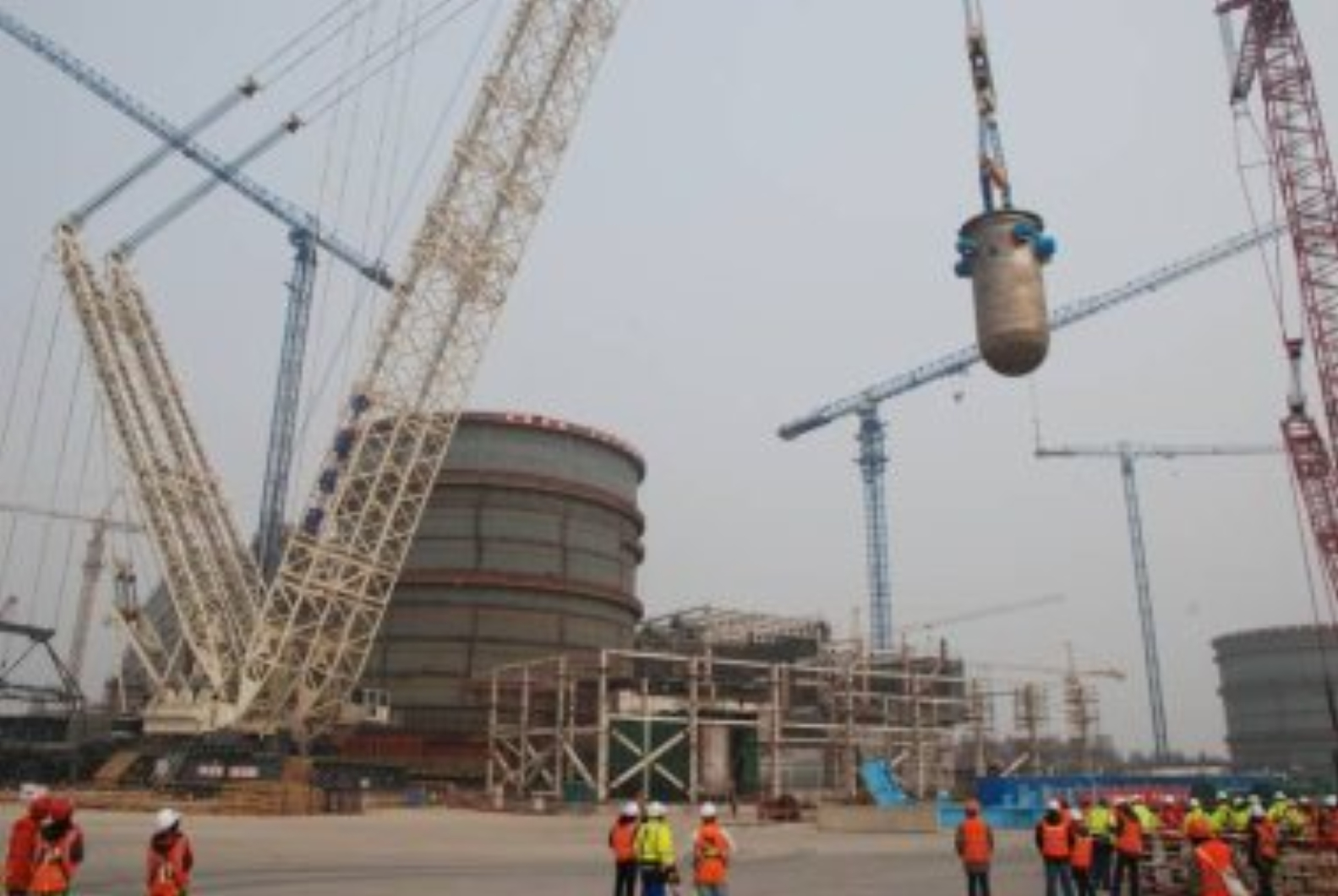Photo captures Westinghouse's nuclear knowledge flying around China


That's not the world's best photo above. But it's highly symbolic. It shows a reactor pressure vessel swinging into place last week at the Haiyang nuclear power plant under construction in China. The pressure vessel is about to land inside the plant's containment chamber.
It's all part of a Westinghouse "AP1000" reactor that's scheduled to come online in 2014. Which gets to the symbolism.
Haiyang is one of four Westinghouse AP1000 plants going up in China. In order to get those jobs, Westinghouse agreed to transfer key know-how to the country. Work wasn't forthcoming in the U.S., so several years ago Westinghouse trotted off to the People's Republic with some nice drawings for sale.
And boy was Beijing interested. China is charging into a nuclear energy future like no other country. Nuclear represents its carbon-light departure from the omnipresent coal plants that currently provide 80 percent of the country's electricity, spewing CO2 and toxic pollutants. It could build as many as 100 reactors by 2030, which is nearly a quarter of all the commercial reactors operating in the world today, according to the World Nuclear Association (WNA).
It has 27 reactors under construction now, including Haiyang in Shandong province, about 470 miles up the coast from Shanghai as the crow flies, where China's State Nuclear Power Technology Corp (SNPTC) is involved. As the WNA notes, "SNPTC has a major role in the transfer of knowledge and technology from the plant supplier, Westinghouse."
The installment of a reactor pressure vessel is a milestone in the construction of a nuclear plant. The vessel above came from South Korea, and took less than 3 hours to put into place, the WNA says. Construction of the Haiyang plant began in 2009. A 2014 start-up would mark an on-schedule, 5-year build.
The AP1000 represents Westinghouse's great safety advance. It's a large reactor that unlike the reactor that melted down at Japan's Fukushima plant does not require externally-powered cooling systems in the event of a shutdown. Rather, the reactor cools itself "passively" (the "P" is for passive, the "A" for advanced) using a giant tank that releases water in the event of an emergency.
The big three nuclear reactor makers -Westinghouse (the American subsidiary of Japan's Toshiba), France's Areva, and General Electric Hitachi (their decades-old design was in place at Fukushima) - are all developing some form of passive cooling.
Westinghouse has been unable to build AP1000 reactors in the U.S, where the Nuclear Regulatory Commission only approved them a month ago. The company hopes that the approval now clears the way for four U.S. AP1000 reactors, two each at Southern Company's Vogtle site in Georgia, and at SCANA Corp.'s V.C. Summer site in South Carolina, according to the Westinghouse web site.
Westinghouse received some other encouraging U.S. government news late last week, when the Department of Energy announced funding for modular reactors - small reactors that are a portion of the size of the AP1000 and that some people believe represent nuclear's future.
Meanwhile, Westinghouse's activity in China trumps that in its home country (that is, if you consider the Toshiba subsidiary to be American, but you get the point). The long term cost is that China is on course to develop its own reactors, with knowledge acquired from Westinghouse and elsewhere, including from within.
China is also pouring resources into developing unconventional reactors that depart from the water-cooled, uranium-fueled reactors that comprise almost all of the world's commercial installments, and of which the AP1000 is one of the latest versions.
Among the alternatives, China is keen on fast neutron reactors - like the one that Bill Gates' TerraPower is developing - as well thorium-fueled reactors, pebble bed reactors, molten salt reactors and fusion reactors.
It's looking likely that the U.S. will at some point have to start playing catch-up to Beijing, as China hoists more and more nuclear gear into place.
More nuclear and China on SmartPlanet:
- DOE outlines funding for small nuclear reactors
- Watch replay of nuclear’s future, with dash of rare earth, political intrigue
- India's Reliance invests in Bill Gates-backed nuclear startup
- Why safe nuclear will rely on rare earth minerals
- Meet the future of nuclear power: 8 guys in China
- How nuclear will make oil greener
- Japan: Nuclear no, renewables yes. China?
- The new face of safe nuclear
And from another well-informed source:
This post was originally published on Smartplanet.com